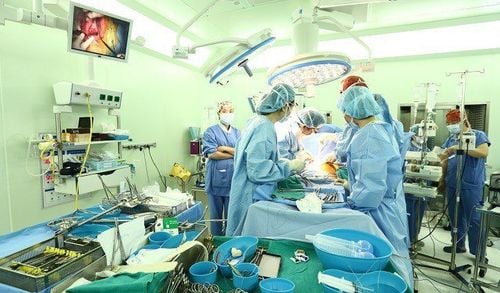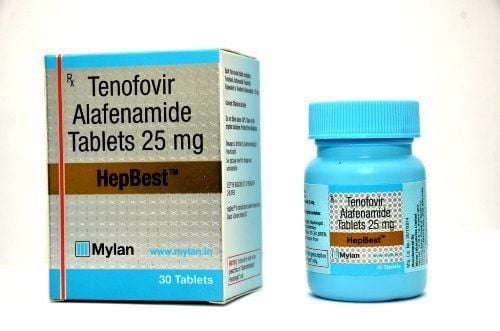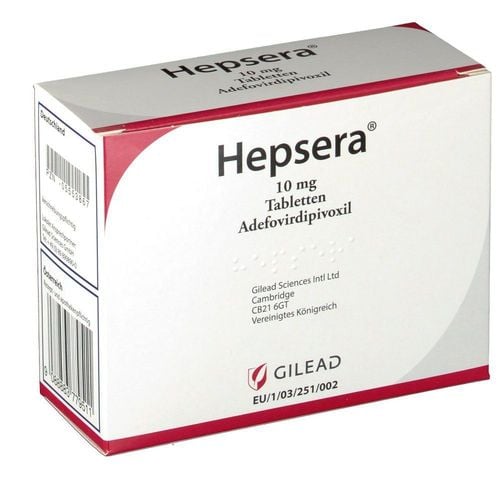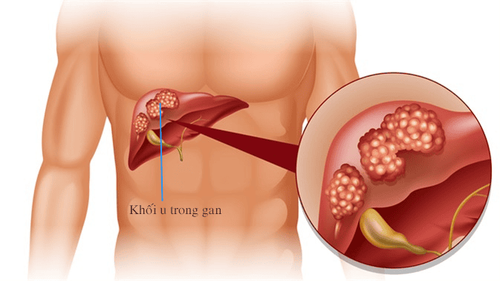This is an automatically translated article.
Liver cancer is the 6th most common cancer in the world with the highest incidence in our country in 2018 with 25,335 cases. In particular, the death rate from liver cancer is almost equal to the number of people with the disease. This is an extremely dangerous disease that requires early detection and treatment to improve the patient's prognosis.
1. What are the symptoms of liver cancer?
The liver is one of the largest organs and has many important roles for the body. The liver has the function of filtering blood, synthesizing necessary proteins for the body, metabolizing drugs, food, ... When you have liver cancer, some cells in the liver grow out of control and create a disease. tumor. This can affect the overall functioning of the liver. Most patients do not notice any signs of liver cancer in its early stages. Symptoms often appear late and may be missed by patients. Signs of liver cancer include:
Feeling full easily or not wanting to eat There is a lump under the right rib cage Feeling pain in the upper right side of the abdomen or near the right shoulder Abdominal pain Enlarged abdomen Feeling tired fatigue Unexplained weight loss White, chalky and dark urine May appear yellow in the skin and whites of the eyes

Người bệnh có thể gặp triệu chứng đau bụng khi bị ung thư gan
2. Factors that increase the risk of liver cancer
A number of factors can increase the risk of liver cancer, including:
Hepatitis B or hepatitis C : When the virus attacks and damages the liver Cirrhosis : Damage to the liver can make the liver appear scar tissue replaces healthy tissue Nonalcoholic fatty liver disease: If you are overweight, have diabetes or metabolic syndrome, you are at increased risk of fatty liver disease and can also lead to cancer liver. Congenital liver diseases, such as hereditary hemoglobinopathy (when excess iron is stored in the liver and other organs) Drinking large amounts of alcohol over many years: Long-term heavy drinking can cause It can cause cirrhosis of the liver and increase the risk of liver cancer. Exposure to Toxic Substances: Some toxins that can cause liver cancer include: Aflatoxin: a toxin produced by molds that can grow on crops like corn and peanuts if they are not stored properly Arsenic : a chemical sometimes found in well water Thori dioxide: a substance once used for some types of X-rays and now deprecated Vinyl chloride: a chemical used to make some plastics
3. Types of liver cancer
Liver cancer can be divided into 2 main groups: primary liver cancer and secondary liver cancer. Primary liver cancer is a disease in which normal cells in the liver become morphologically and functionally abnormal. Secondary liver cancer is caused by cancer cells from other parts of the body that metastasize to the liver and form a tumor. Primary liver cancer includes the following main types:
Hepatocellular carcinoma (HCC): This is the most common type of liver cancer. The disease occurs in the main cells of the liver, called hepatocytes. HCC usually causes a tumor to grow larger over time. But if the patient has both cirrhosis and hepatocellular carcinoma, there may be many small tumors that have spread throughout the liver. Bile duct cancer: The second most common type of cancer is bile duct cancer. This pathology occurs in the bile ducts. Hepatoblastoma is a very rare cancer that mainly occurs in children under 4 years of age.
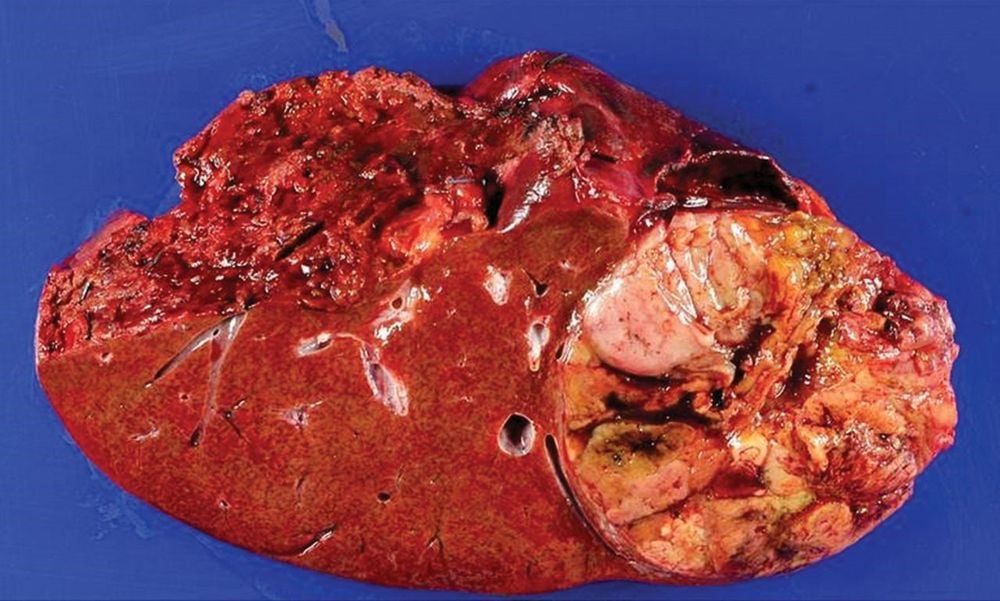
Hình ảnh ung thư gan ở người bệnh
4. How is liver cancer diagnosed?
If your doctor suspects you have liver cancer, they may order the following tests:
Biopsy: The medical staff will take a small sample of your liver and look at it under a microscope to look for abnormalities in the liver. specimen Blood test: This test checks how well the liver is working and looks for markers of liver cancer in the blood. Imaging tests: Your doctor may order an ultrasound, a CT scan, an MRI, or an angiogram (which uses a type of X-ray to look at and examine blood vessels). Liver cancer images will help doctors diagnose the disease
5. Stages of liver cancer
The stage of liver cancer tells the patient how far the tumor has spread:
Stage I: A tumor has not spread anywhere else Stage II: A tumor has spread into the blood vessels or has more than one tumor, but all are smaller than 2 inches Stage III: One tumor has spread to large blood vessels or nearby organs or more than one tumor and at least one of them is larger than 2 inches Stage IV: Cancer has spread to other parts of the body.
6. How is liver cancer treated?
6.1 Liver surgery or transplant Treatment for liver cancer depends on the stage as well as your age, overall health, and liver health. If the cancer has not spread and the patient has no other liver problems, the patient may have surgery to remove the tumor or a liver transplant.
6.2 Tumor Removal Therapy This therapy helps kill cancer cells in different ways:
Alcohol use: The doctor puts pure alcohol on the tumors to destroy them. Freezing: The doctor uses a thin instrument, called a transducer, to freeze and destroy tumor cells. Heat: Uses high heat to destroy tumors. Electrical pulses: Using an electric current to kill cancer cells is still being tested. 6.3 Embolization Therapy Your liver receives blood from two major blood vessels. Tumors usually use only blood from the hepatic artery. In embolization therapy, a thin tube is passed through the patient's thigh and into the hepatic artery. The doctor then inserts a substance into the tube to block blood flow through the hepatic artery and cut off blood flow to the tumor. The patient's liver will still receive blood through another blood vessel. Chemotherapy drugs or radiation agents may also be given through the tube.
6.4 Targeted Therapy Cancer cells work differently than normal cells. Targeted therapy uses drugs specifically designed to attack cancer cells based on those differences. This can prevent tumors from making the blood vessels they need to survive, or stop tumor cells from dividing and growing.
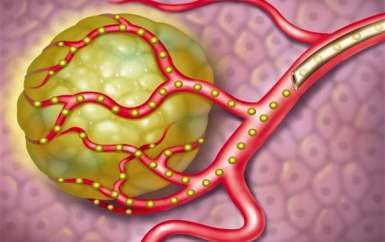
Một số phương pháp điều trị ung thư gan được ứng dụng hiện nay
7. Measures to prevent liver cancer?
We can reduce the risk of liver cancer thanks to the following measures:
Get vaccinated against hepatitis B. Maintain a healthy weight Maintain a balanced diet, limit oily foods fat. increase the supply of vegetables and fruits Regular exercise Limit the use of alcohol, beer and other stimulants Do not arbitrarily use intravenous drugs. When needing to use injectable drugs, it is necessary to go to medical facilities to perform or use clean needles if the patient can self-medicate at home. Only tattoo, piercing at shops ensure safe hygiene. Liver cancer is increasing and is an obsession of many patients because it is difficult to treat and has a worse prognosis than other cancers. The best way to prevent and detect liver cancer is to have regular health check-ups, especially for patients with risk factors such as cirrhosis, alcoholic hepatitis, hepatitis B and C, etc. In addition, being fully vaccinated against hepatitis B, avoiding exposure to toxic chemicals that cause liver damage will also reduce the risk of disease.
Please dial HOTLINE for more information or register for an appointment HERE. Download MyVinmec app to make appointments faster and to manage your bookings easily.
Reference source: webmd.com



